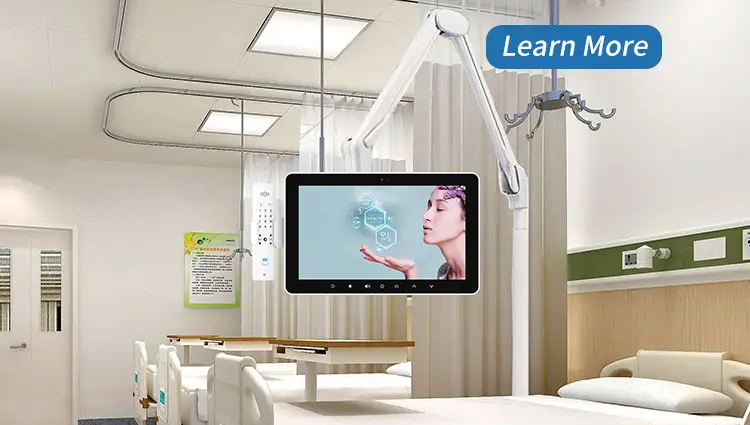- 1. Personalized Care at the Bedside
- 2. The Central Hub for Patient Engagement
- 3. Integrating with Hospital Software Systems
- 4. Boosting Patient Satisfaction Scores
- 5. Multilingual and Accessible Interfaces
- 6. Reducing Staff Workload with Self-Service Tools
- 7. Telemedicine at the Bedside
- 8. Choosing the Right Terminal: Hardware & Features
As hospitals continue to evolve into digitally driven, patient-first environments, healthcare providers and technology partners alike are rethinking what it means to truly engage patients. One of the most powerful—and often underutilized—tools in this transformation is the bedside infotainment terminal.

These smart, medical-grade devices are much more than entertainment screens. They serve as a central hub for communication, education, comfort, and care coordination—all from the patient’s bedside.
In this article, we explore how bedside infotainment terminals can supercharge your hospital projects and elevate the patient experience from good to exceptional.
1. Personalized Care at the Bedside
Bedside infotainment terminals allow patients to access entertainment, treatment plans, test results, and even educational content—directly from their beds. With the ability to personalize their experience, patients feel more in control, which improves satisfaction and adherence to care plans.
2. The Central Hub for Patient Engagement
These terminals act as a digital bridge between patients and hospital services. From ordering meals and submitting non-clinical requests to reviewing discharge instructions, the bedside screen simplifies and enhances the entire patient journey.
3. Integrating with Hospital Software Systems
A smart terminal integrates seamlessly with HIS, EMR/EHR, nurse call, and dietary systems. This interoperability allows care teams to access real-time data and patients to receive timely, tailored information. It supports clinical accuracy and improves operational efficiency.
4. Boosting Patient Satisfaction Scores
Smart bedside interfaces increase transparency and responsiveness—two key factors driving HCAHPS and other satisfaction metrics. Hospitals that implement infotainment solutions see measurable improvements in feedback and patient perception of care quality.
5. Multilingual and Accessible Interfaces
With support for multiple languages and accessible design features (e.g., large fonts, audio readers), these terminals ensure inclusive care for patients of all backgrounds and abilities. Everyone deserves to understand and engage in their treatment—regardless of language or literacy level.
6. Reducing Staff Workload with Self-Service Tools
By enabling patients to handle non-clinical needs independently, these devices free up nurses and support staff to focus on urgent care duties. Functions like digital surveys, FAQ access, and meal orders reduce interruptions while still meeting patient needs efficiently.
7. Telemedicine at the Bedside
Built-in video capabilities allow for secure virtual consultations, follow-ups, and family video calls. This functionality reduces transfer needs, eliminates unnecessary appointments, and provides emotional support—especially important in isolation wards or long-term stays.
8. Choosing the Right Terminal: Hardware & Features
Look for a terminal that includes:
- Medical-grade certifications (IEC 60601-compliant)
- Antimicrobial, easy-to-clean materials
- OS flexibility (Android, Linux)
- Secure access controls and HIPAA compliance
- API/SDK support for software integration
- Remote management and maintenance tools
The right hardware ensures smooth implementation, scalability, and durability in clinical settings.
Bedside infotainment terminals are no longer optional—they are essential for hospitals striving to deliver efficient, personalized, and connected care. As healthcare becomes more digital, patients must remain at the center of every touchpoint. These smart terminals make that vision possible—bridging the gap between software and patient experience, between care plans and comfort.

